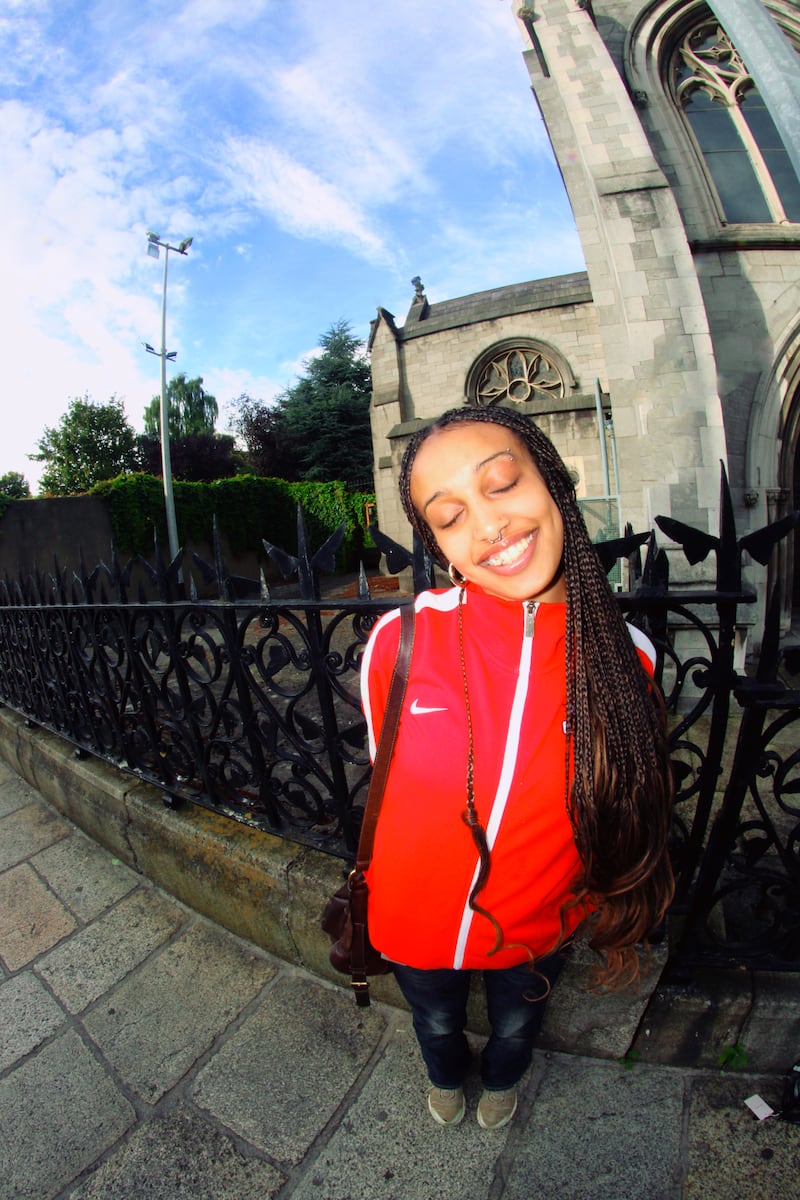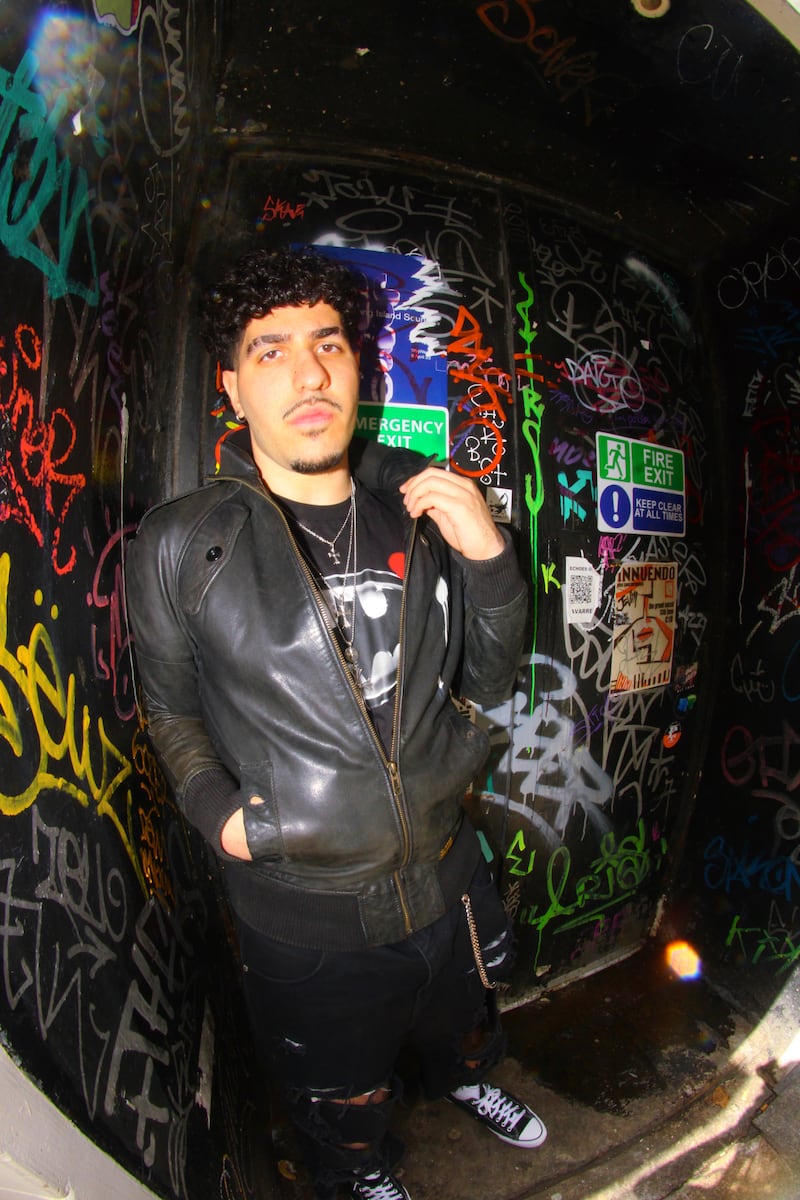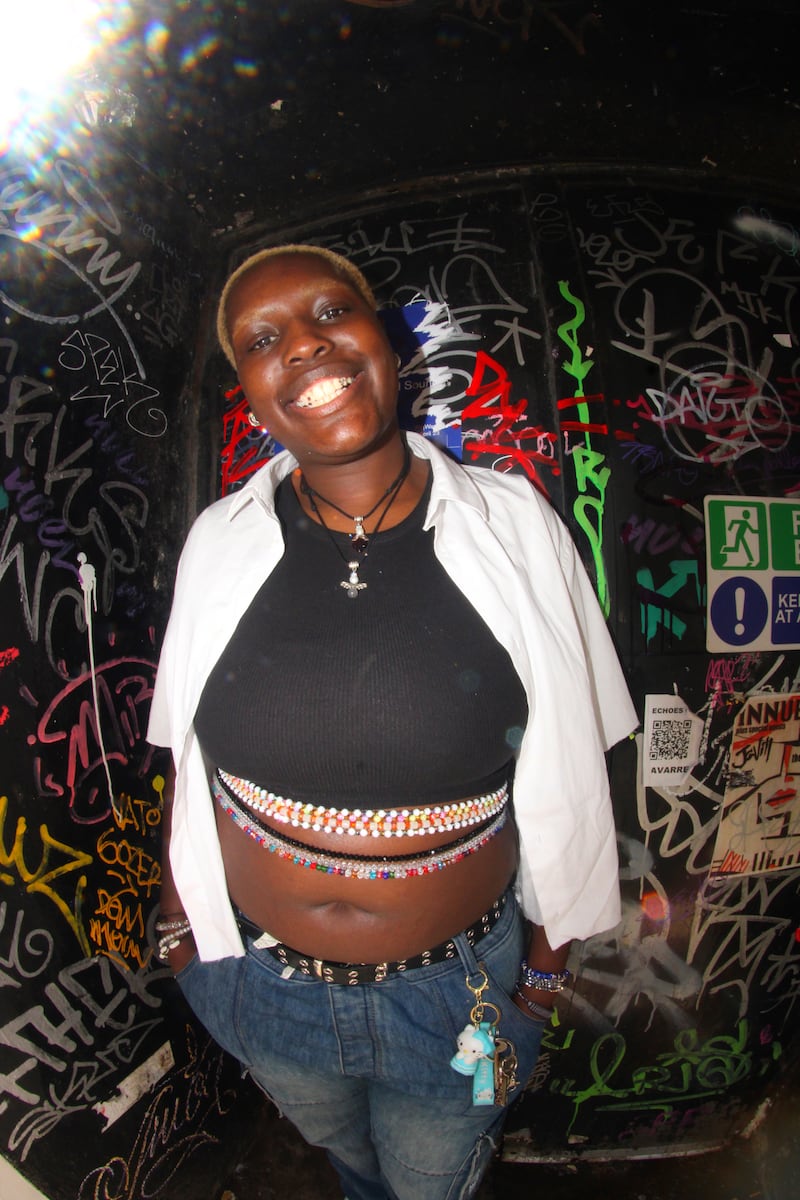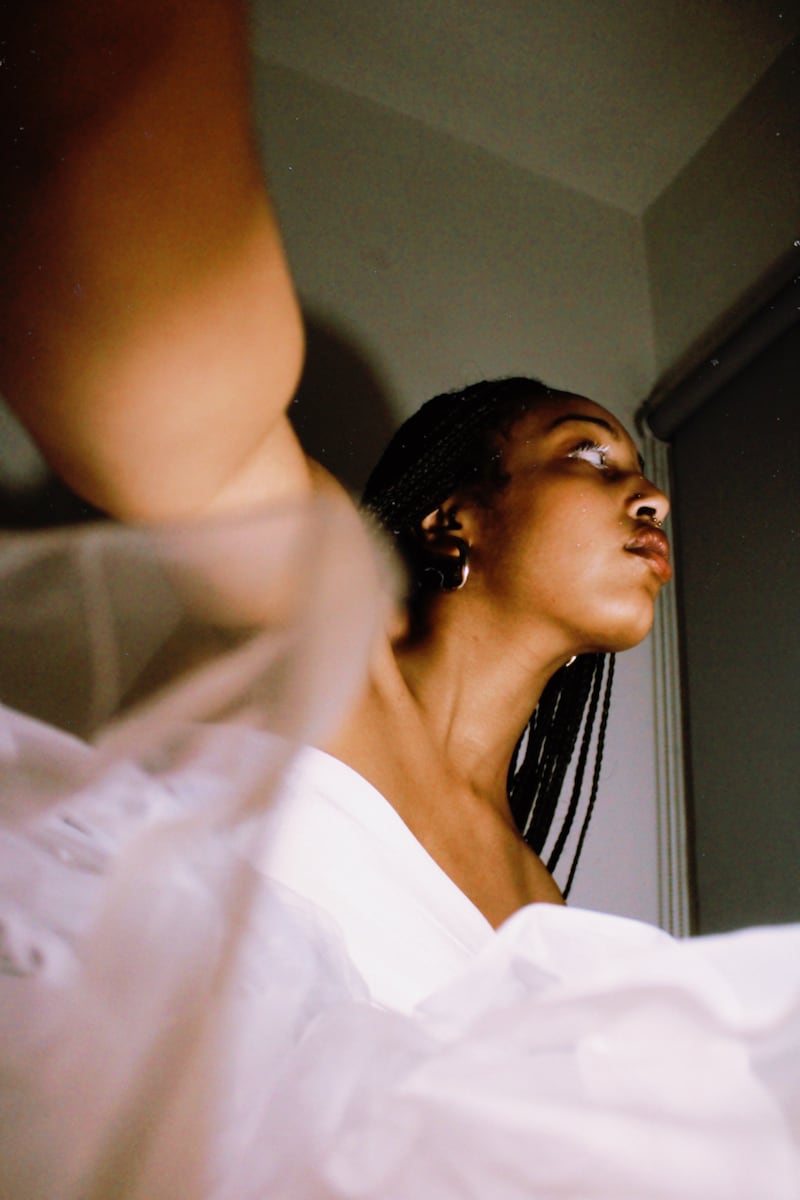A special Teenage Edition of the Magazine this weekend features articles written by aspiring young journalists on issues that matter to them, from the impact of TikTok on their lives, to accessibility, sustainable fashion, making music, and keeping young women playing sport.
Rebecca Ewnetu hasn’t bought an item of “fast fashion” clothing in five years. “The last time I would have been 15, and [now] I’m 20,” she explains in Dublin’s George’s Arcade, the soul of which is everything that fast fashion isn’t. “I think it’s best to just not buy clothes at all. People should upcycle and do clothes swaps.”
I’m in the capital speaking to young people about their experiences of shopping second-hand, or thrifting as it’s called in the US. If packed stores and enthusiastic shoppers are anything to go by, the practice is on the rise, with a new generation of consumers willing to buy preloved garments. As someone with a keen interest in fashion, I’m here to find out the draw for Dublin’s youth, along with their best haunts and finds.
In 2022, according to the Irish Charity Retail Impact Report, 7.3 million garments were sold across charity shops, which predominantly sell second-hand clothes, bringing in €43 million in revenue. This prevented the incineration of 17,300 tonnes of clothing items, saving 62,230 tonnes of carbon equivalent emissions.
READ MORE
[ From bags to riches: How to resell the clothes you never wearOpens in new window ]
Despite this, almost 10 per cent of global carbon emissions continue to be produced by the fashion industry. Three out of five garments made each year will end up in a landfill. It’s the third-most polluting industry in the world – more than aviation and shipping combined.
In the UK, one in three young women consider a garment worn once or twice to be old, according to the Business of Fashion’s 2019 state of fashion report. But on the streets of Dublin, there remains a dedicated cohort of Gen Z consumers who are conscious of the environment – and their style – who are favouring second-hand over brand new.
Ewnetu is wearing a soft brown hoodie she got from a friend. “We do clothes swaps a lot when we get tired of pieces we own,” she says. She stopped buying fast fashion after learning about its impacts through Irish YouTuber Keelin Moncrieff, who has 82,000 followers. Moncrieff used to work at Dublin Vintage Factory in Temple Bar.
“I don’t think [influencers] realise how much of an influence they have – especially on younger people,” says Ewnetu. “So when they decide to stop doing something, their followers will actually follow through with that as well.”

A recent report from Behaviour and Attitudes found that almost one in two Gen Z consumers in Ireland are buying products endorsed by influencers.
“There was cottagecore, kitschcore – whatever – and people were following those trends,” she says. “But I feel like after we came out of Covid, people started developing their own sense of style and they were just wearing whatever made them feel comfortable.”
As we speak in the arcade, crowds of shoppers shuffle past, eyeing the various trinkets on display. There are shops selling everything from band merch to leprechaun T-shirts.

Also in the arcade, wearing a distinctive oversized purple coat, is 22-year-old Leo Mazor. He bought the coat for €40 in Sharp’s Ville, Temple Bar, but his favourite vintage item to buy is jeans. “I love older denim especially,” he says. “It’s cheaper, it’s better, it’s more durable.” The Israeli-born stylist recently set up Maze Dublin, a fashion business selling reworked vintage clothing.
“Reworking essentially means either tailoring, distressing [or] adding more designs. You could paint a piece, you could kind of destroy it, you could completely tear it apart and make a new piece from it.”
Most of what he knows he learnt from YouTube and TikTok. “I never went to any fashion course or anything, but a lot of it is just stuff that I learned online.” Mazor is hosting a fashion show to debut his upcoming collection Gotham Rav3 at the Sound House on September 23rd.
[ Want stylish second-hand clothes? Our guide to the sustainable way to dress wellOpens in new window ]
[ Vintage vogue: sustainable office dressing is the smart choiceOpens in new window ]
Despite an apparent shift among young people towards sustainable second-hand shopping, this shift has yet to translate into a wider shunning of cheaply made clothes. The 2023 State of Fashion Report suggested that while financial setbacks around the world have depleted young people’s incomes, many are expected to deprioritise spending on clothes and opt for cheaper, and perhaps less sustainable, garments.

“A lot of people are broke students,” says Claudia Bamidele, wearing a baggy blue sweater and dark trousers she upcycled from her sister. “It’s cheaper, [and] faster when you’re going online.” Some people her age prefer to order €100 worth of Shein clothes that might be used for one summer, compared to the same amount being spent on two good vintage items, she says.
“I wear a lot of blacks, blues and pink as well,” she says. “I just wear what I wear, that’s all I can say.”
Dressed like a ‘bingo-playing grandmother’
Across the road in Oxfam on George’s Street, I encounter more shoppers. Despite the dreary Irish weather, the small shop is packed. Old vinyl decorates the walls above shelves of bags and colourful rails. Bonnie (18), from Rathfarnham, tells me she likes digging around for unusual jumpers in charity shops.
“I got this red Christmas jumper,” she says, adding she wears it all the time. “It was really cool.” However, she has noticed the prices in charity shops have increased recently, a sense shared among many who spoke to The Irish Times. “I don’t know if that’s because of resellers, but it’s a bit annoying.”
To find that outfit-completing gem at the back of a charity shop, you have to be consistent, she says. “If you go very regularly, you’ll find something you like eventually. If you go to the richer areas as well, they can sell you better things.” Dundrum, Dún Laoghaire, George’s Street and Galway City are her favourite spots to mooch around.
Strolling into the Oxfam shop, Rebecca O’Connell stands out. She is dressed like a “bingo-playing grandmother” according to her brother, who joined her for the shopping trip.
The 21-year-old stopped buying fast fashion four years ago, (“Just for environmental reasons. I went vegan at the time as well.”). She’s conscious that buying second-hand stops clothing ending up in landfill, and donates a lot of what she buys to make up a continuing cycle. According to Oxfam, half a tonne of unwanted clothes is dumped in landfill in Ireland every minute.
[ The young designer making high fashion from Paris houses’ waste fabricOpens in new window ]
“I find more in vintage shops than charity shops because I’m a more colourful person,” says O’Connell. “They have more unique bits.” She buys most of her pieces in Nine Crows and Lucy’s Lounge in Temple Bar, Oxfam on George’s Street and Patrick’s Curiosities in Dún Laoghaire.
Dublin Vintage Factory co-owner Terri Murphy Jones says his vintage clothing store, which has an array of stock dating anywhere from the 1960s to the early 2000s, is increasing in popularity. “At the moment, ‘Y2K’ is probably the most sought-after style. But we still stock vintage dresses from the ‘60s/’70s, vintage ‘80s and ‘90s sportswear, plus vintage denim and leather items.” He says vintage clothing is becoming more accessible and acceptable than it may have been viewed in the past, with more celebs and influencers preferring to shop vintage and thrift.
Inside, Dublin Vintage Factory retains some organised chaos amid a mishmash of styles. Its contents are older and more curated than those in a charity shop. Idly browsing around is 21-year-old South African student Mela Nowack. She tells me she is inspired by her mother’s style (“interesting textures and shapes and forms”). “It’s just the idea of mixing and matching even things that don’t really match, but they kind of do harmonise. Fashion always comes back every few years in cycles. [My Mom’s] just really out there – very wacky.”

In The Big Smoke Vintage, also owned by Murphy Jones, Izzy Wigglesworth (20), says she likes buying second-hand T-shirts “because they just have really weird designs on them. You can just find things that say really random things, or really funny slogans and stuff like that.
“I think it’s a lot better to buy things that you can use for 10 different outfits than buy one thing that only goes with one other thing that you have,” she explains. “And I think it’s just better than having 50 different T-shirts to have five that you can wear with everything that you want.”

Too much Tubridy: What Irish teenagers think of the news
This weekend, for the first time, the content of The Irish Times Magazine will be written entirely by teenagers. The six volunteers tackle subjects including the pitfalls of Tiktok, why many young women drop out of sport and what it is like to be a wheelchair user. One of their mentors for the project was Patrick Freyne, who recorded a conversation with them about the way their generation consumes news and the issues they really care about.
Back in George’s Street Arcade, Ewnetu sums up her attitude to fashion: “Invest in clothes you actually really like and ‘statement pieces’. Don’t just buy something because you think it’s nice. That leads to the whole overconsumption thing again and just buying loads of things... You’re not going to keep all of them [and] you throw some out.”
While second-hand is more environmentally friendly than fast-fashion, it’s not the perfect solution for Ewnetu: Buying second-hand doesn’t solve overconsumption and pollution, she says.
People are still buying too many clothes.
Wiktoria Willer was mentored by Irish Times journalist Conor Capplis



















